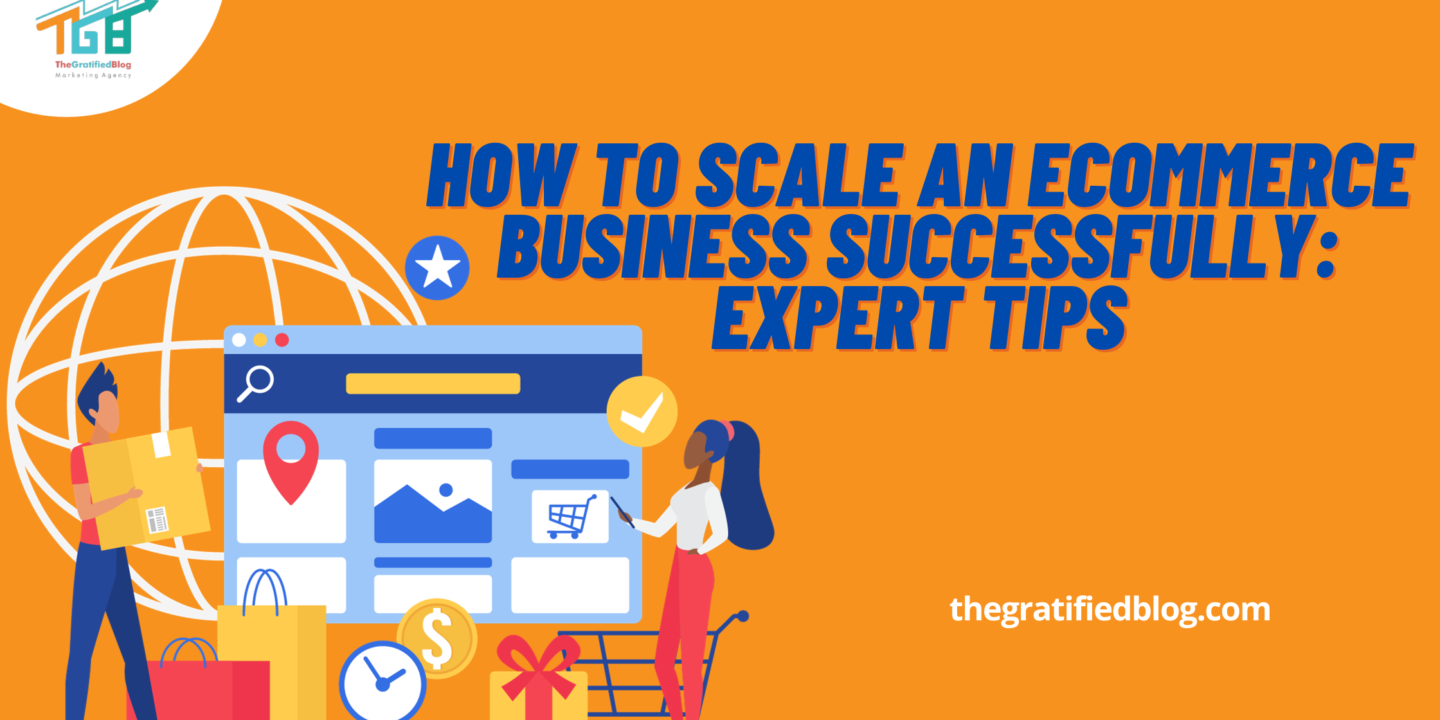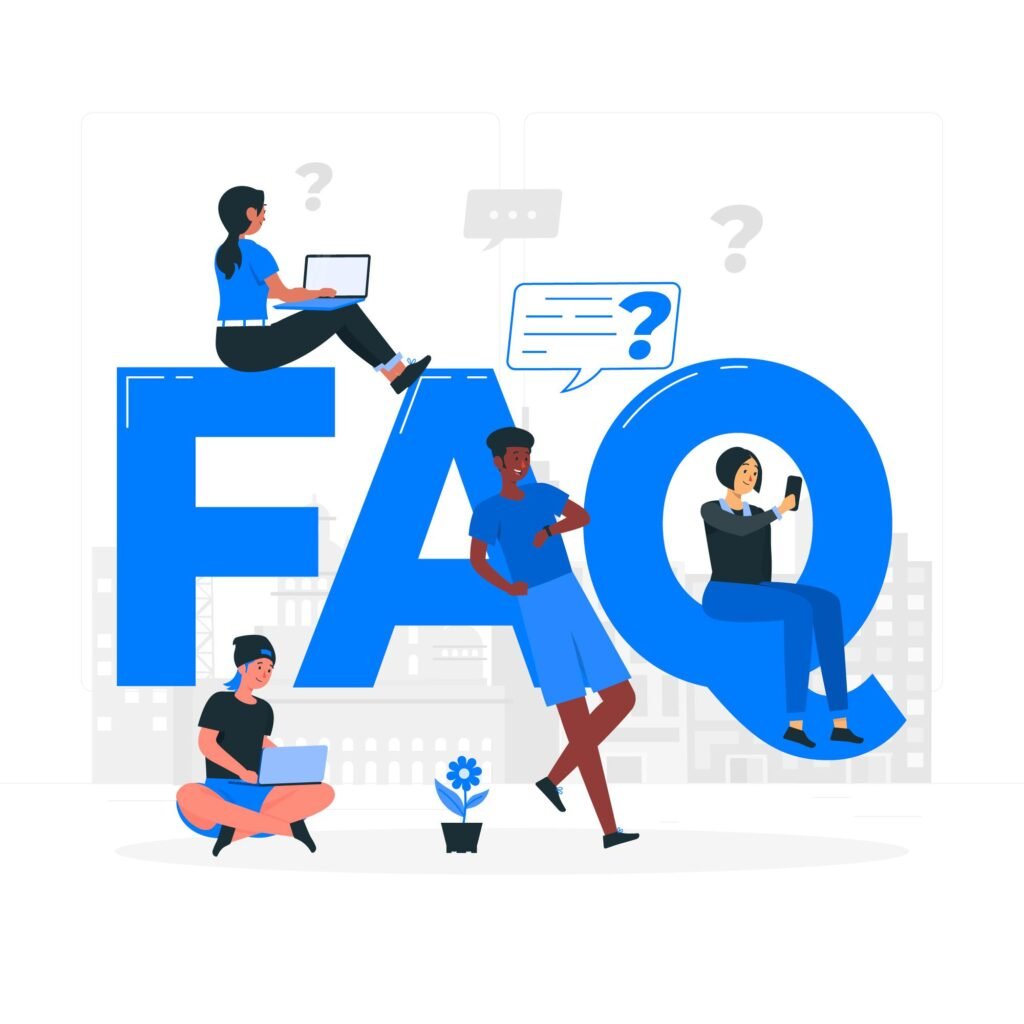
The world of ecommerce has experienced explosive growth in recent years, and it shows no signs of slowing down. Given the ease of online shopping, consumers are increasingly turning to ecommerce for their shopping needs.
As an ecommerce entrepreneur, this presents a significant opportunity but comes with its own set of challenges.
Scaling a successful ecommerce business Necessitates meticulous planning, strategic thought, and a dedication to ongoing enhancement. In this article, we will explore 12 expert tips on how to scale an ecommerce business successfully.
Understanding The Basics Of Ecommerce Scaling

Before diving into the expert tips for scaling an ecommerce business, it’s essential to understand the fundamentals of ecommerce scaling. Scaling refers to expanding and growing your Running business while preserving or enhancing its efficiency and profitability.
Successful scaling involves increasing revenue, expanding the customer base, and optimizing operational processes.
Scaling an ecommerce business is not just about adding more products or boosting marketing efforts; It entails employing a strategic approach to guarantee enduring and sustainable growth. Here are some key concepts to remember:
Clear Business Model
The cornerstone of success lies in a robust business model for your ecommerce business. Before you scale, have a well-defined business model outlining your target audience, product offerings, pricing strategy, and marketing channels.
Customer-Centric Approach
Customer satisfaction is paramount in ecommerce. Understand the requirements and inclinations of your customers and customize your approach accordingly. Satisfied customers are inclined to become repeat purchasers and advocates for the brand.
Efficient Operations
Efficiency in your supply chain, order fulfillment, and customer service is crucial. Streamline your processes to handle increased demand without sacrificing quality or customer experience.
Scalable Technology
Invest in scalable ecommerce technology, such as a robust website, efficient inventory management systems, and reliable payment gateways. Your technology should be able to grow with your business.
Financial Planning:
Ensure you have a clear financial plan for scaling your business. Consider factors like cash flow, funding sources, and profitability. It’s essential to have the resources to support growth.
How To Scale An Ecommerce Business Successfully: Expert Tips
1. Data-Driven Decision-Making
One of the critical advantages of ecommerce is the abundance of data available. Successful scaling begins with the collection and analysis of this data. Utilize tools like Google Analytics, customer relationship management (CRM) software, and ecommerce analytics platforms to gain insights into customer behavior, sales trends, and website performance.
Data-driven decision-making helps you identify which products perform well, which marketing channels are most effective, and where to improve your website’s user experience. Through data analysis, you can make decisions based on well-informed insights on where to allocate resources for scaling.
Implement A/B testing for your website and marketing campaigns to optimize your strategies based on honest user feedback and behavior.
2. Expand Your Product Line Strategically
Expanding your product offerings is a common strategy for scaling an ecommerce business. However, it’s essential to do this strategically. Consider the following tips:
- Niche Expansion: If you started with a niche product, explore related product categories to expand your offerings while staying Within your specific market segment; this can aid in leveraging an established presence customer base.
- Market Research: Perform comprehensive market research on pinpoint products with demand. Use keyword research, trend analysis, and competitor analysis To discover potential products for inclusion in your inventory, conduct thorough market research..
- Supplier Relationships: Enhance connections with your suppliers to ensure a steady supply of new products. Negotiate favorable terms to maintain healthy profit margins.
- Quality Control: Maintain a high-quality control standard to ensure that new products meet the same quality and customer satisfaction level as your existing products.
- Testing and Piloting: Before committing fully to a new product line, consider piloting it to gauge customer interest and demand.
3. Optimize Your Website For Scalability
Your ecommerce website is the heart of your business, and it needs to handle increased traffic and transactions as you scale. Here are some ways to optimize your website for scalability:
- High-Performance Hosting: Invest in robust, scalable hosting that can handle increased traffic without slowing down your website. Consider options like cloud hosting for flexibility.
- Mobile-Friendly Design: Ensure your website is mobile-responsive. As the number of consumers making purchases on mobile devices continues to rise, a mobile-friendly design is crucial.
- Fast Loading Times: Slow-loading websites can result in high bounce rates. Optimize your website for speed, including image compression, efficient coding, and content delivery networks (CDNs).
- Scalable Ecommerce Platform: Choose an ecommerce platform that can scale with your business. Popular options like Shopify, WooCommerce, and BigCommerce offer scalability and customization.
- Security Measures: Establish strong security measures to safeguard customer data and build trust. An SSL certificate and regular security audits are essential.
- User Experience (UX): Continually improve user experience by conducting usability testing, enhancing navigation, and simplifying checkout.
4. Implement Effective SEO Strategies
Search engine optimization (SEO) is crucial to any ecommerce business’s growth strategy. SEO contributes to elevating your website’s ranking and enhancing its visibility in search engine results to make it more easily discoverable by potential customers. How to implement effective SEO strategies:
- Keyword Research: Perform comprehensive keyword research to pinpoint your products’ most relevant and high-traffic keywords. Utilizing tools such as Google Keyword Planner can assist in this.
- On-Page SEO: Optimize product and category pages for your target keywords. That includes optimizing product descriptions, titles, meta descriptions, and image alt text.
- Content Marketing: Create high-quality, informative content related to your products and industry. Blog posts, guides, and videos can attract organic traffic.
- Link Building: Establish top-notch backlinks to your website from trustworthy sources—partner with influencers, industry publications, and other websites to gain valuable backlinks.
- Technical SEO: Verify that your website is technically sound, including proper schema markup, XML sitemaps, and error-free pages.
- Local SEO: If you have a physical store or serve a local market, optimize your website for local search by setting up Google My Business and obtaining local citations.
- Monitor and Adapt: It is an ongoing process. Monitor your rankings, traffic, and user behavior and adapt your SEO strategies accordingly.
5. Invest In Paid Advertising
Paid advertising effectively boosts your ecommerce business’s visibility and drives traffic quickly. Platforms such as Google Ads and Facebook Ads offer powerful tools for reaching your target audience. Here are some tips for successful paid advertising:
- Targeted Campaigns: Use audience targeting to reach the most relevant potential customers. Fine-tune your targeting by considering demographics, interests, and online behavior.
- Budget Allocation: Allocate your advertising budget wisely. Start with small budgets and scale up as you see positive results.
- A/B Testing: Experiment with different ad creatives. Analyze advertising text and landing pages to pinpoint elements that effectively strike a chord with your audience.
- Remarketing: Implement remarketing. Initiate campaigns to re-engage users who have browsed your website but did not make a purchase. This can lead to higher conversion rates.
- Performance Tracking: Use advertising platforms’ analytics tools to track the performance of your Adapt your strategy based on the data from campaigns to optimize ROI.
6. Customer Retention And Loyalty
While acquiring new customers is necessary, retaining existing ones is equally crucial for scaling your ecommerce business. A committed customer base can serve as a consistent revenue stream and referrals. Implement the following strategies for customer retention:
- Email Marketing: Create personalized email campaigns to inform customers about new products, promotions, and updates. Use automation to send tailored messages based on customer behavior.
- Loyalty Programs: Establish loyalty programs that reward repeat customers with discounts, exclusive access, or points for future purchases.
- Exceptional Customer Service: To build trust and loyalty, provide exceptional customer service. Promptly address customer inquiries and resolve issues.
- User-generated Content: Promote customers to share reviews and share their experiences with your products. Positive reviews can build trust with potential buyers.
- Surveys And Feedback: Gather customer input to identify improvement areas and show that you value their opinions.
7. Inventory Management
Efficient inventory management is crucial for scaling your ecommerce business. You don’t want to run out of popular products, but you also don’t want to overstock, tying up capital in unsold inventory. How to manage your inventory efficiently:
- Demand Forecasting: Use historical sales data, market trends, and seasonal patterns to forecast product demand.
- Just-in-Time (JIT) Inventory: Implement a JIT inventory system to minimize excess inventory and reduce storage costs.
- Automation: Use inventory management software to automate reordering and monitor inventory levels in real time.
- Safety Stock: Maintain a safety stock level to handle unexpected increases in demand or delays in supply.
- Supplier Relationships: Cultivate robust connections with your suppliers to ensure timely restocking and favorable terms.
- Inventory Turnover Ratio: Monitor your inventory turnover ratio to understand how quickly products sell and adjust your purchasing accordingly.
8. International Expansion
Scaling your international ecommerce business can open up new markets and revenue streams. However, it’s essential to approach international expansion with a well-thought-out strategy:
- Market Research: Research target markets to understand cultural differences, local preferences, and competitive landscapes.
- Localized Content: Adapt your website and marketing materials to cater to the local audience. That may include translations, currency options, and regional promotions.
- Logistics and Shipping: Establish efficient international shipping and fulfillment methods. Consider partnerships with local logistics providers to streamline the process.
- Compliance And Regulations: Be aware of each target market’s international trade regulations, taxes, and import/export restrictions.
- Payment Options: Provide payment options that are widely used and trusted in the target market. Ensure that the checkout process is user-friendly for international customers.
- Customer Support: Offer customer support in the language and time zone specific to the local region, addressing inquiries and issues promptly.
9. Social Media and Influencer Marketing:
They can be powerful tools for scaling your e-commerce business. Implementing practical approaches to scaling your ecommerce through Leveraging social media can significantly enhance your online visibility and sales.
Engage with your audience on platforms such as Instagram, Facebook, and Pinterest, where you can showcase your products and connect with potential customers. Consider the following strategies:
- Content Strategy: Create a content strategy that aligns with your brand and products. Create visually appealing and shareable content that resonates with your target audience.
- Influencer Marketing: Collaborate with influencers with a solid online presence in your niche. Collaborating with influencers can assist you in expanding their reach to a broader audience and establishing trust among their followers.
- User-Generated Content: Motivate customers to generate and distribute content related to your products. User-generated content can serve as authentic endorsements.
- Paid Social Advertising: Use paid advertising. Utilize social media platforms to extend your reach to a broader audience and retarget website visitors.
- Engagement And Community Building: Engage with your followers and build a community around your brand. Respond to comments, run contests, and encourage discussions.
10. Measure And Monitor Key Metrics
To successfully scale your ecommerce business, you must regularly measure and monitor key performance indicators (KPIs) to assess the health and growth of your business. Some essential metrics to track include:
- Conversion Rate: Track the proportion of website visitors converting into customers. Identify factors that influence conversion and work to improve them.
- Customer Acquisition Cost (CAC): Calculate the cost of acquiring each customer through advertising and marketing efforts. Ensure that your CAC remains within a profitable range.
- Customer Lifetime Value (CLV): Determine the long-term value of each customer to your business. Focus on strategies that increase CLV, such as repeat purchases and upselling.
- Gross And Net Profit Margins: Understand your profit margins to make informed pricing decisions and optimize cost management.
- Cart Abandonment Rate: Analyze the reasons behind cart abandonment and implement strategies to reduce it, such as retargeting and email reminders.
- Return On Investment (ROI): Calculate the ROI of your marketing campaigns to ensure that your advertising dollars generate a positive return.
- Inventory Turnover: Track how quickly your inventory sells to avoid overstocking or understocking.
- Customer Satisfaction And Net Promoter Score (NPS): Gather customer feedback to gauge their satisfaction and loyalty. High NPS scores indicate strong customer advocacy.
- Traffic Sources: Determine the origins of your website traffic and allocate resources to channels that generate the highest ROI.
- Customer Churn Rate: Monitor the rate at which customers stop doing business with your company. Implement strategies to reduce churn and retain more customers.
11. Strategic Partnerships And Alliances
Consider forming Establish Forge strategic partnerships and alliances with businesses that align with your objectives.ecommerce offerings. This can assist you in accessing untapped customer segments and expand your reach. Some potential partnership ideas include:
- Affiliate Marketing: Collaborate Collaborate with affiliates who endorse your products in return for a commission on sales. That is a performance-based marketing strategy.
- Marketplace Selling: Expand your presence by selling your List products on online marketplaces such as Amazon or eBay.
- Co-Marketing: Partner with a non-competing business to run joint marketing campaigns, cross-promotions, or bundle deals.
- Dropshipping: Partner with suppliers who offer dropshipping services to expand your product catalog without holding inventory.
- Wholesale And B2B Partnerships: Explore opportunities to sell your products to other businesses in bulk or through business-to-business (B2B) arrangements.
- Brick-and-Mortar Collaborations: If applicable, collaborate with brick-and-mortar stores for offline distribution of your products.
12. Customer Feedback And Iterative Improvement
Your customers are an invaluable source of feedback and insights. Actively seek and use customer feedback to make iterative improvements to your ecommerce business. Here’s how to go about it:
- Surveys And Feedback Forms: Use surveys, feedback forms, and post-purchase follow-up emails to gather customer insights.
- Product Reviews: Prompt customers to provide product reviews and ratings. Address negative reviews professionally and use them as opportunities for improvement.
- Usability Testing: Conduct usability testing to identify any usability issues on your website and make necessary enhancements.
- Product Development: Consider product development based on customer feedback and market demand.
- A/B Testing: Continuously A/B test different website elements, including layouts, images, and copy, Analyze to determine what resonates most effectively with your audience.
- Customer Service Improvements: To develop an excellent customer service strategy, it’s essential to use feedback to enhance your customer service processes and ensure a positive experience for every customer.
FAQ’S

1. How Can I Scale My Ecommerce Business Fast?
Ans: To scale your ecommerce business quickly, optimize your website for user experience and mobile responsiveness. Invest in digital marketing strategies like SEO, Utilize social media advertising and email marketing to extend your reach to a broader audience.
Consider expanding your product line, improving logistics, and offering excellent customer service to drive growth.
2. How Do You Scale Ecommerce Sales?
Ans: To scale ecommerce sales, optimize your website for user experience and mobile responsiveness. To reach a broader audience, implement effective digital marketing strategies like SEO, social media advertising, and email campaigns.
Invest in data analysis and customer feedback to improve your product offerings and customer service.
Q3. How Can We Ensure Sustainable Growth While Scaling My E-commerce Business?
Answer: Sustainable growth in ecommerce scaling requires careful planning and a focus on long-term success. Develop a solid business model, establish efficient supply chain management, and prioritize customer satisfaction. Continuously analyze market trends, monitor competition, and adapt your strategies accordingly. Invest in employee training and development to maintain operational excellence. Lastly, stay updated on industry advancements and technologies to stay ahead in the competitive landscape.
Conclusion
Scaling a successful ecommerce business requires strategic planning, data-driven decision-making, and a commitment to providing a top-notch customer experience.
As you commence your endeavor to expand your ecommerce enterprise, remember there is no one-size-fits-all solution. Each company is unique, and the path to success may involve a mix of the expert tips mentioned in this article.
Whether you’re just starting your ecommerce venture or looking to take an existing business to new heights, the principles of solidifying your brand identity, optimizing your website, leveraging data, diversifying product offerings, and investing in marketing are universally valuable.
As you scale, always keep your customers’ needs at the forefront of your decisions, and be prepared to adapt and innovate in the ever-evolving world of e-commerce.
With the right strategy and a commitment to growth, your ecommerce business can achieve sustainable success in a competitive online marketplace.








No Comments